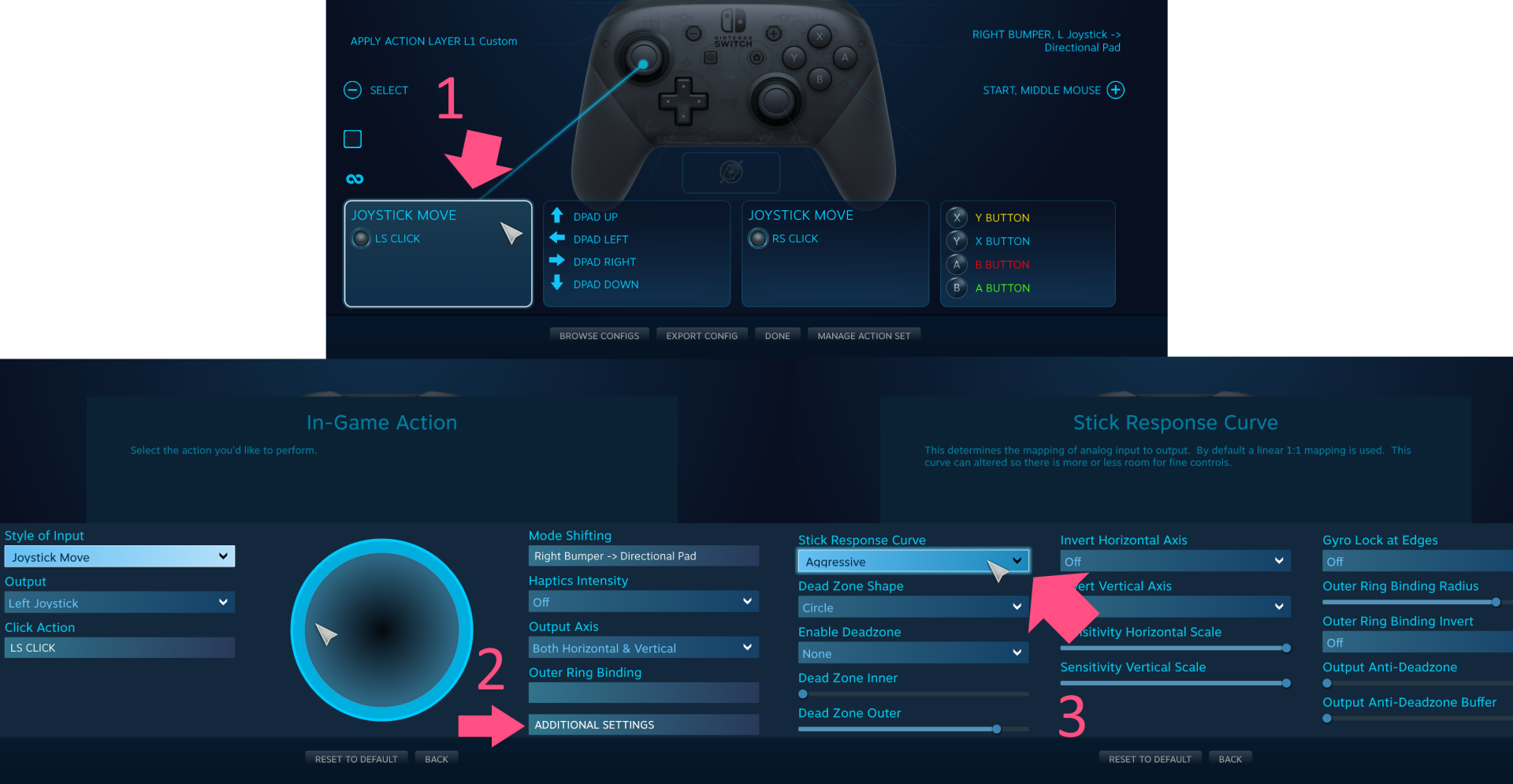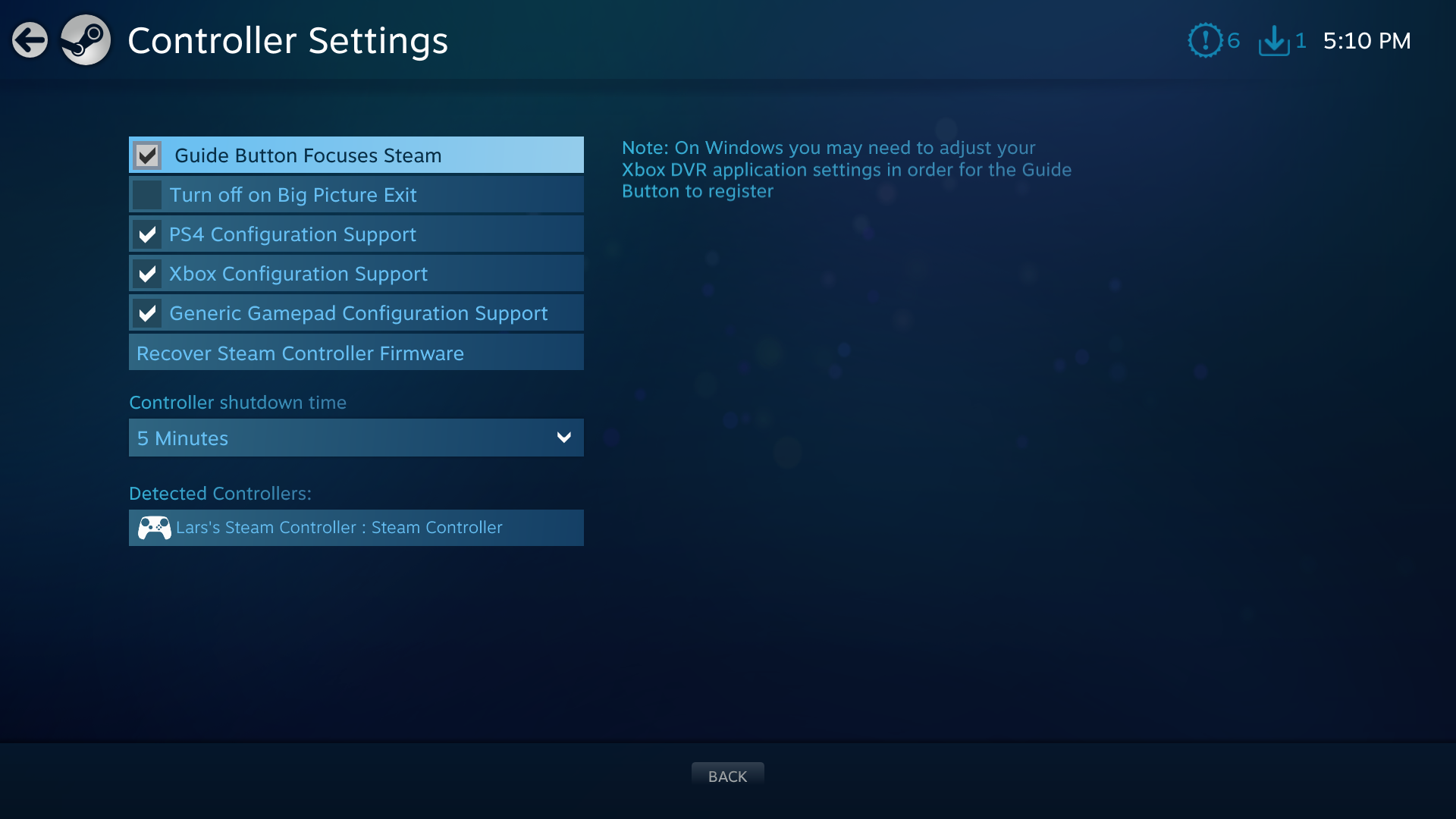

- #Accessing controller config files for steam on mac code
- #Accessing controller config files for steam on mac Pc
- #Accessing controller config files for steam on mac series
For example, if you are using an Xbox series controller, check the Xbox Configuration Support box. In the Controller Settings window, check the boxes to activate the configuration support for whichever types of controllers you will be using. Click on the Controller tab and click the General Controller Configuration button.ģ. Open Steam and go to the Settings section under the Steam tab.Ģ.
#Accessing controller config files for steam on mac Pc
Steam's Controller Settingsįor this tutorial, you will need to have the Steam application downloaded onto your PC and have a either USB-compatable controller or a wireless bluetooth controller.ġ. Thankfully, Steam's PC gaming features have a solution for this. However, not everyone is used to using a keyboard to control a game and might even be more comfortable using a console contoller to play. Most videogames on the PC are designed to be played using a keyboard (usually, WASD controls) and a mouse. Since Laravel provides an easy to create and use them, it makes them even more good to use.This article is for users who want to be able to play most PC video games with a controller instead of having to use a keyboard and/or mouse. ]Ĭonfig files are helpful when developing in Laravel, especially when building Laravel Packages. env file and use it in our application like this. So we create a new FACEBOOK_API_KEY in our.
#Accessing controller config files for steam on mac code
env file and reference it in our code whenever we need it. Thankfully, in Laravel we can create an environment variable in our. A more suitable solution would be to use environment variables. When you push your site to git or whatever version control you use, this gets stored forever. Opening our config file, we can add an API key section to our facebook array. Don't know what an environment variable is, check this article. To get around this problem, we can use environment variables. These data include API keys, usernames, and passwords.

Data that we don't want to show up in our git repo. There are times when we need sensitive data in our config files. Or config ( ) Using Environment Variables with Config Files The config function is exactly like the Config facade. NOTE: Trying to set an inexistent config value would not work. We could also pass an array and use that to set values. If during the application lifecycle, you want to change a config file value. Passing the second parameter to the get method means that you want to return a default value if the config value does not exist.

To do that, just enter the name of the configuration file without. We need to tell the facade what configuration file to use. v Get Started w/ JavaScript for free! echo Config :: get ( 'facebook.url' ) īut, this won't work just yet. To get the facebook's page URL, we would use something like this. To get the option in our config file, we call a static get method on the Config facade. The first method we will talk about is using Laravel's inbuilt Config facade. There two ways with which we can access config variables present in our config file.

return, 'twitter' = > ] Using Config Variables We can even use multi-dimensional arrays too. To do that, we set array key values as our options. Now that we have our config file, we need to set options. There, we have created a configuration file. After creating the file, open it and return an empty array. For our example, let's call our file social.php. To create a configuration file, go to the config directory and create a file there. Creating configuration files is not an exception to that rule. One reason developers love Laravel is the fact that it makes everything simple. When building a Laravel Package, config files go a long way in helping you build a configurable and functional package. Using Environment Variables with Config Files


 0 kommentar(er)
0 kommentar(er)
